Why do I preach about intermittent fasting? In the United States alone, at least 2 out of every 3 Americans are overweight or obese. The United States obesity rates are currently higher than any other country in the world. This obesity epidemic not only carries health risks but also carries a hefty price tag. “The estimated annual health care costs of obesity-related illness are a staggering $190.2 billion or nearly 21% of annual medical spending in the United States. Childhood obesity alone is responsible for $14 billion in direct medical costs.” (1) Not only is this epidemic crippling on society monetarily, but other health risks and diseases associated with obesity are dramatically increased. For instance, those suffering from obesity are at a higher risk for developing cancer, CAD, diabetes, and stroke and an estimated 300,000 annual deaths can be drawn to obesity. (4). In short… There is a problem that needs to be addressed.
Why though, are we suffering with this epidemic? It’s not for lack of trying. It’s my guess that anyone reading this article can fairly say that they have at one point in time, tried a diet or exercise program. I believe the real problem lies in the “diet” mindset itself, rather than our drive to lose weight. We are going about it all wrong! In this article I am going to teach you about intermittent fasting and the problem with the caloric deficit model.
Table of Contents
The Biggest Loser
Many of you are aware of The Biggest Loser television series. If you aren’t, I will sum it up for you. The Biggest Loser is a television show where an obese population of contestants compete against each other. The winner of the show is the contestant who loses the biggest percentage of weight relative to their starting weight. They do this using the “Eat Less, Move More” method of weight loss. But, let me ask you a question. Have you ever seen a reunion show? I haven’t, and my guess is, that is because most of the contestants have regained the weight that they lost during the contest. But, why?
Why “Eat Less, Move More” does not work
The contestants begin by dropping their caloric intake down dramatically in order to expend more energy than they take in. But, heres what happens over the course of the show. Figure 1 shows us that the average decrease in contestant resting metabolic rate (how fast they burn calories) decreases by >700 calories by the time the show ends. So, let’s crunch some numbers. Say for example, a contestant starts the show with a RMR of 2000 cals and at the beginning of the show they start a diet where they only ingest 1500. At this point in time they will obviously begin to lose weight because they are eating 500 calories less than their expenditure. However, by the end of the show the contestant’s RMR drops 700 calories to 1300. So, the contestant that is still eating 1500 calories per day went from being at a 500 calorie deficit to actually being at a 200 caloric surplus. Meaning that they will no longer be losing weight, but in fact gaining.
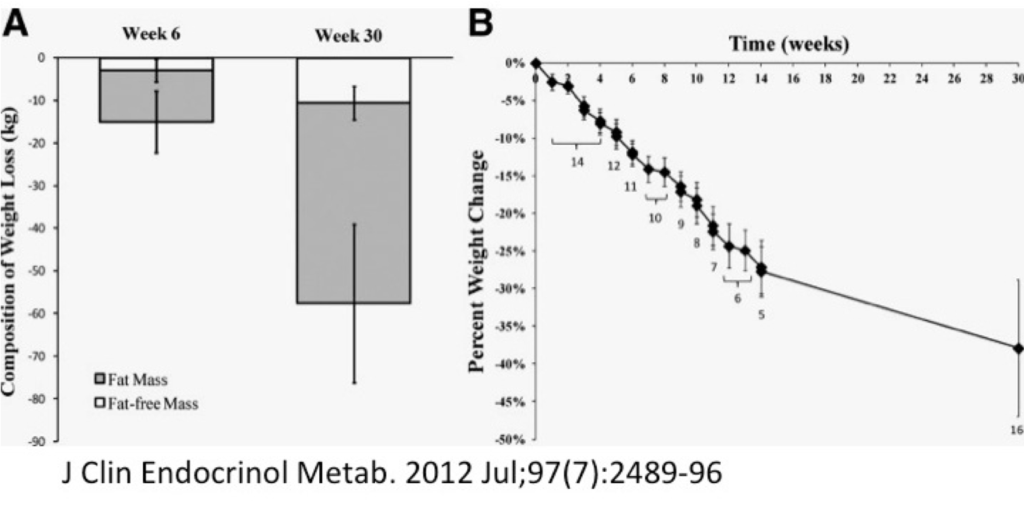
So, you can see why this type of diet is a problem. The issue lies with our bodies ability to adapt. Our bodies are made to survive. If we try to starve ourselves of calories, we’re not just going to fade away and die. Instead, our body will begin to conserve energy to keep us alive. So, not only will we not lose weight, but our ability to expend energy will decrease as well. And now you aren’t losing weight and on top of that, you are feeling fatigued which translates into poor exercise.
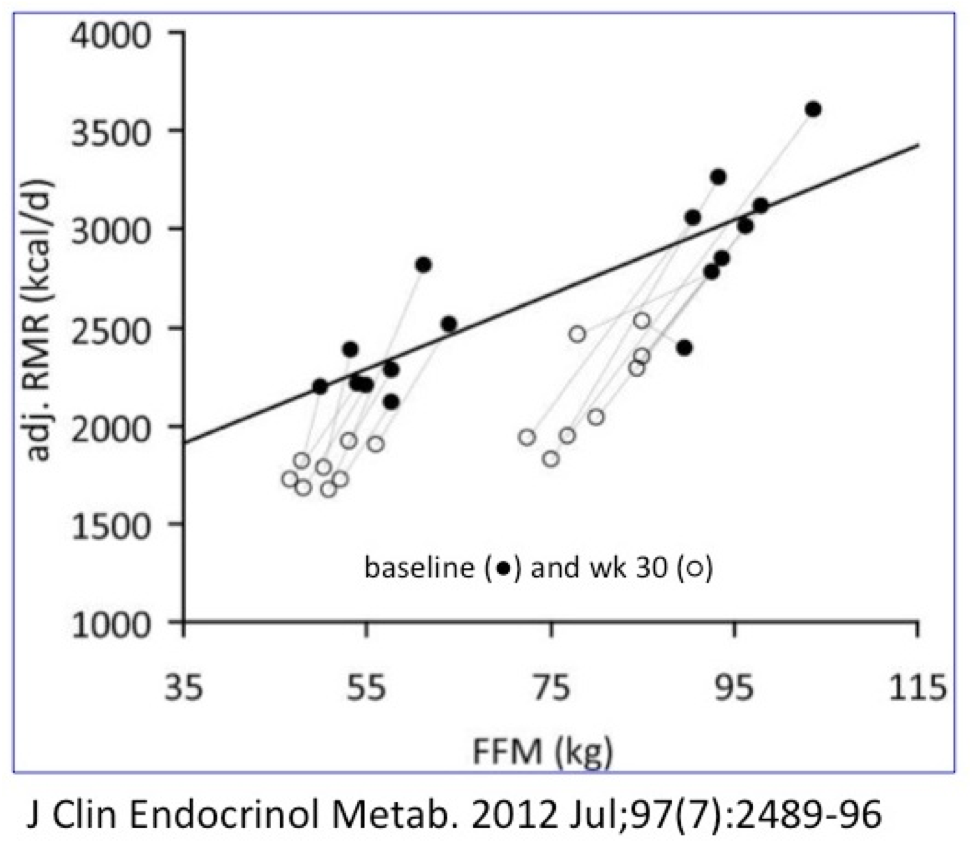
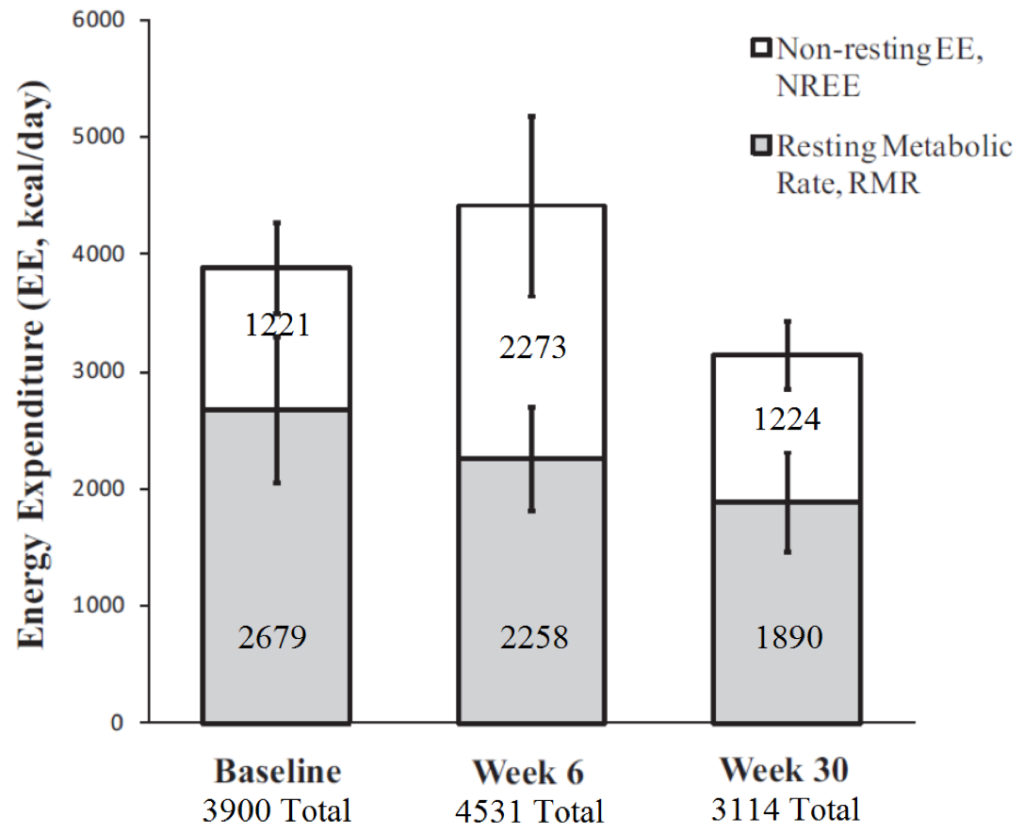
Eat less and move more does not work
We have to evidence to say that eating less and moving more doesn’t work! So, why are we still teaching this method? It’s no wonder people give up when they try dieting! They are destined for failure if they use this technique. We need a better way.
Intermittent Fasting Is Our Better Way
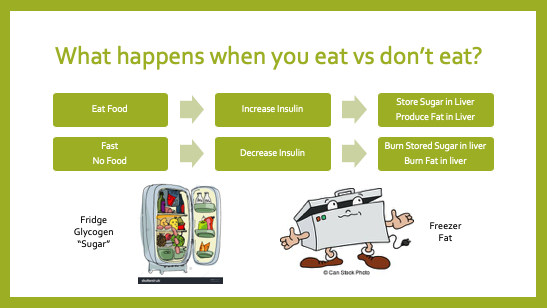
The reason intermittent fasting is a better method is based on our bodies energy storage systems and our abilities to access these storage systems to retrieve energy. Eat less, move more uses the idea that our body stores energy in one giant compartment and that all energy is the same. Instead, we need to look at the body as a two compartment system. We will say that the fridge stores our glycogen or sugar and that the freezer stores our fats. Just like in our homes, it is much easier to access food within the fridge than the food within our freezer. So, how do we get to the fat that is in the freezer? The answer is insulin.
Insulin: The ruler of the compartments
The hormone that is essentially in charge of which forms of energy our body will use or where we will pull energy out of is insulin. Insulin allows our body to use sugars from the food that we eat as energy or to store that sugar for future use. (2) So, in order to get to our fat storage we need to get insulin out of the way! How do we do that? By fasting.
We need to outsmart insulin by fasting. During fasting the body switches from burning sugars to burning fat. As shown in Figure 5, the body first uses carbohydrates in the initial stages of the fast. After this stage, there is a drop of insulin within the blood and there is a dramatic spike in fat oxidation rate. This spike remains high for the duration of the fast. Now hold on, won’t my body burn all my muscles/proteins as well? The answer to that, is no! As you can see by the blue line in the graph, there is a mild spike initially, however protein oxidation then drops and remains low for the duration of the fast.

Simply put, fasting empties our carbohydrates from our fridge so that we can dip into our fat storage in the freezer.
Increased Energy With Fasting
Another reason that fasting is the superior method to fat loss is that you will not get the fatigue as you would from the “eat less and move more” method. Actually quite the opposite, you will have an increase of energy. This is because as your insulin levels drop, you gain energy from not only your fat storage, but you will also have increases in norepinephrine/noradrenaline as shown in Figure 6. Norepinephrine actually increases your heart rate, increases blood flow to muscles, increases alertness, increases arousal, and speeds reaction time. It has also been shown to play a role in a person’s mood and ability to concentrate. (3)
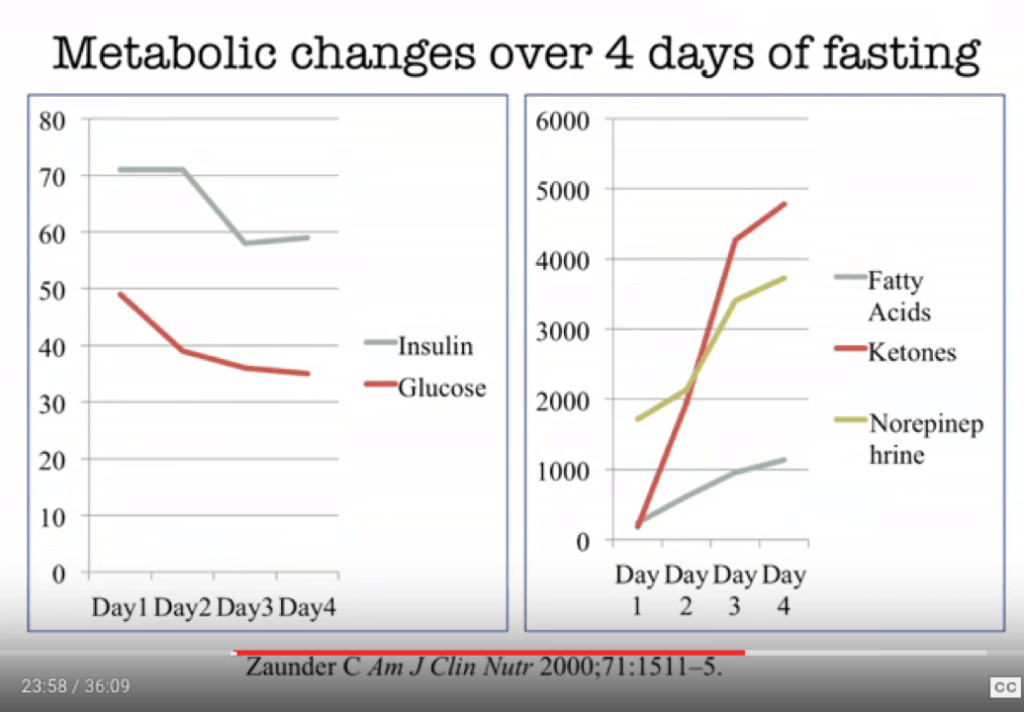
What is Intermittent Fasting
Intermittent fasting (IF) is a pattern of eating rather than a diet. It is a pattern of eating followed by long periods of fasting or not eating. IF does not focus on what foods to eat or not to eat, so it can be used with any other diets or protocols.
Methods of Intermittent Fasting
- The 16/8 method: Also called the Leangains protocol, it involves skipping breakfast and restricting your daily eating period to 8 hours, such as 1–9 p.m. Then you fast for 16 hours in between. (5)
- Eat-Stop-Eat: This involves fasting for 24 hours, once or twice a week, for example by not eating from dinner one day until dinner the next day. (5)
- The 5:2 diet: With this methods, you consume only 500–600 calories on two non-consecutive days of the week, but eat normally the other 5 days. (5)
Advantages of Intermittent Fasting
- Simplicity: Fasting is easy to understand
- Free: Other diets are expensive
- Convenient: Other diets are time consuming
- It is a habit of not doing: there is no shopping, no cooking, no clean up, not cost, not time, no preparation, no eating!
- You can add it to any other diet’
- Heart Health
- Brain Health
- Weight Loss
- Anti-Cancer
- Anti-Aging
Do Not’s of Intermittent Fasting
Many people who intermittent fast find it easy to overindulge when it is finally time to eat. This is a problem and should be avoided. You can help avoid this problem by eating slowly and drinking plenty of water throughout the day as well as with your meal.
Also, avoid drinking anything other than black coffee and water while in the fasted state. Even zero calorie drinks that have artificial sweeteners have been shown to increase blood insulin levels. So, just don’t do it.
My preference
When I started intermittent fasting I began with the 16/8 method, as this was the easiest transition from alway eating to fasting. As this method became easier I then switched to 18/6, then to the Eat-Stop-Eat method. I found that once I was only eating once a day my productivity went through the roof. You don’t realize how much time you spend thinking about, preparing, and eating food until you cut that whole process out almost completely. It truly is very freeing! Good luck to you all on your new adventure and keep me updated in the comments on how you are doing and what methods you are trying!
Please leave and comment and share this post if you liked it! Also, feel free to contact me and shoot me any questions if you have them and I will be happy to help!
- https://www.healthycommunitieshealthyfuture.org/learn-the-facts/economic-costs-of-obesity/
- https://www.endocrineweb.com/conditions/type-1-diabetes/what-insulin
- https://www.everydayhealth.com/norepinephrine/guide/
- https://www.wvdhhr.org/bph/oehp/obesity/mortality.htm
- https://www.healthline.com/nutrition/intermittent-fasting-guide#methods





Fantastic article on intermittent fasting, Dr. Rush! Everything you said about it is true! I have been trying the 16/8 method for about a week, and my energy is going out the roof! I’d like to do this the rest of my life. I was looking for something that worked, and this does! So excited to find something I love and can easily do! This is perfect for a person with a busy job. All you have to do is wait to eat! Anyone can do this!!! Way to stay on the cutting edge of innovative health discoveries, Dr. Rush!!!
Thanks so much for taking the time to read this Christy!
I am excited for your new health adventure!